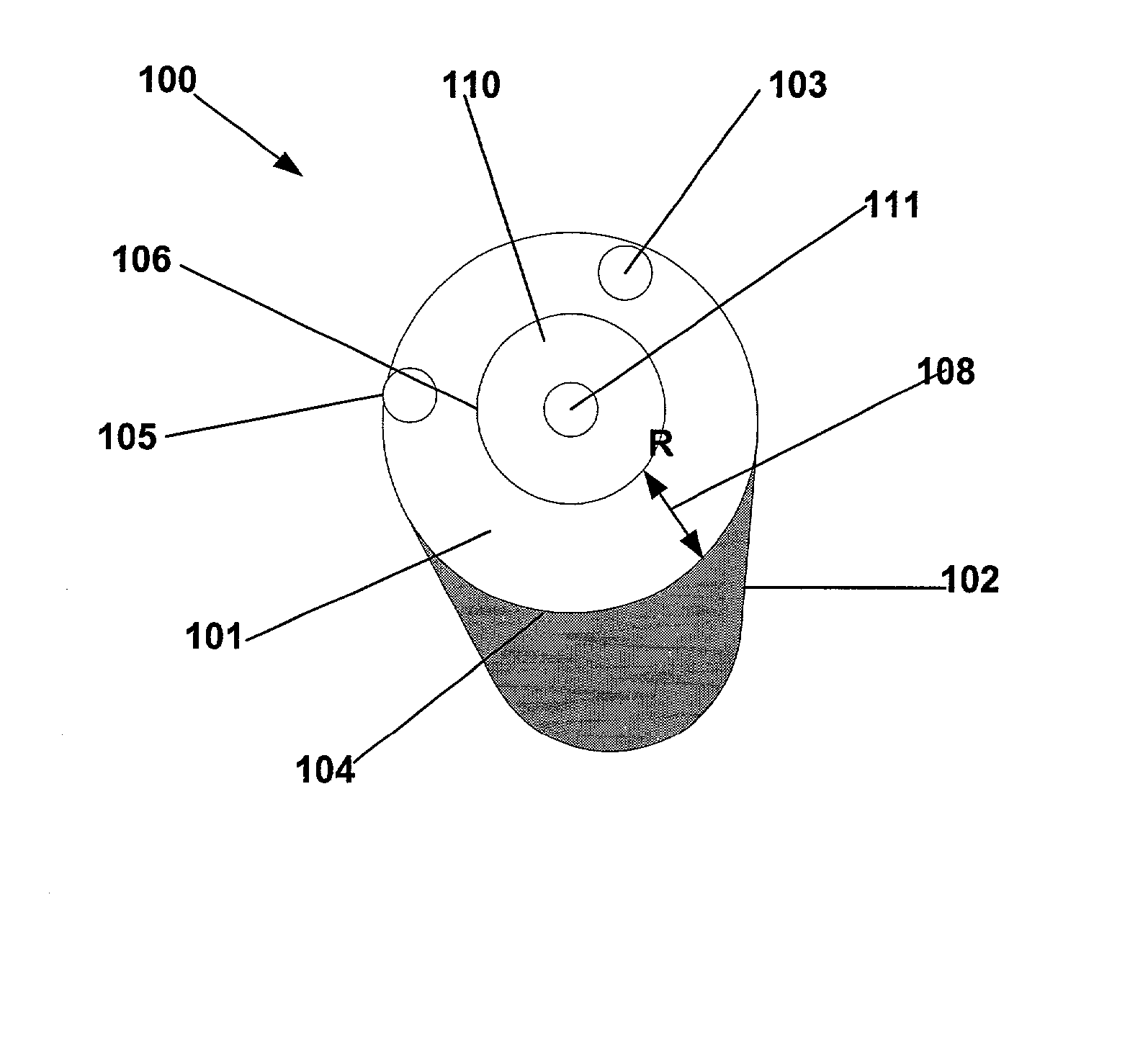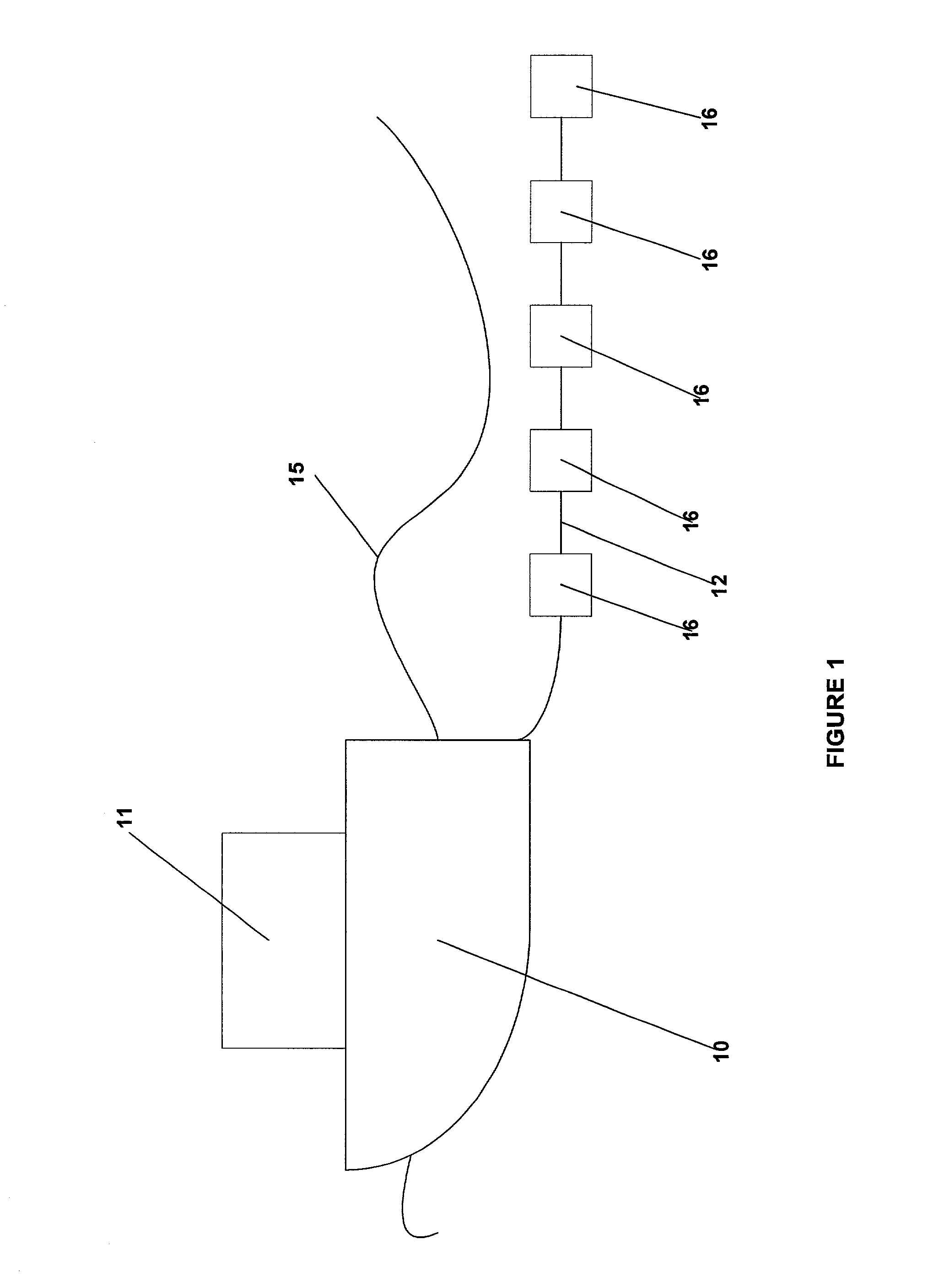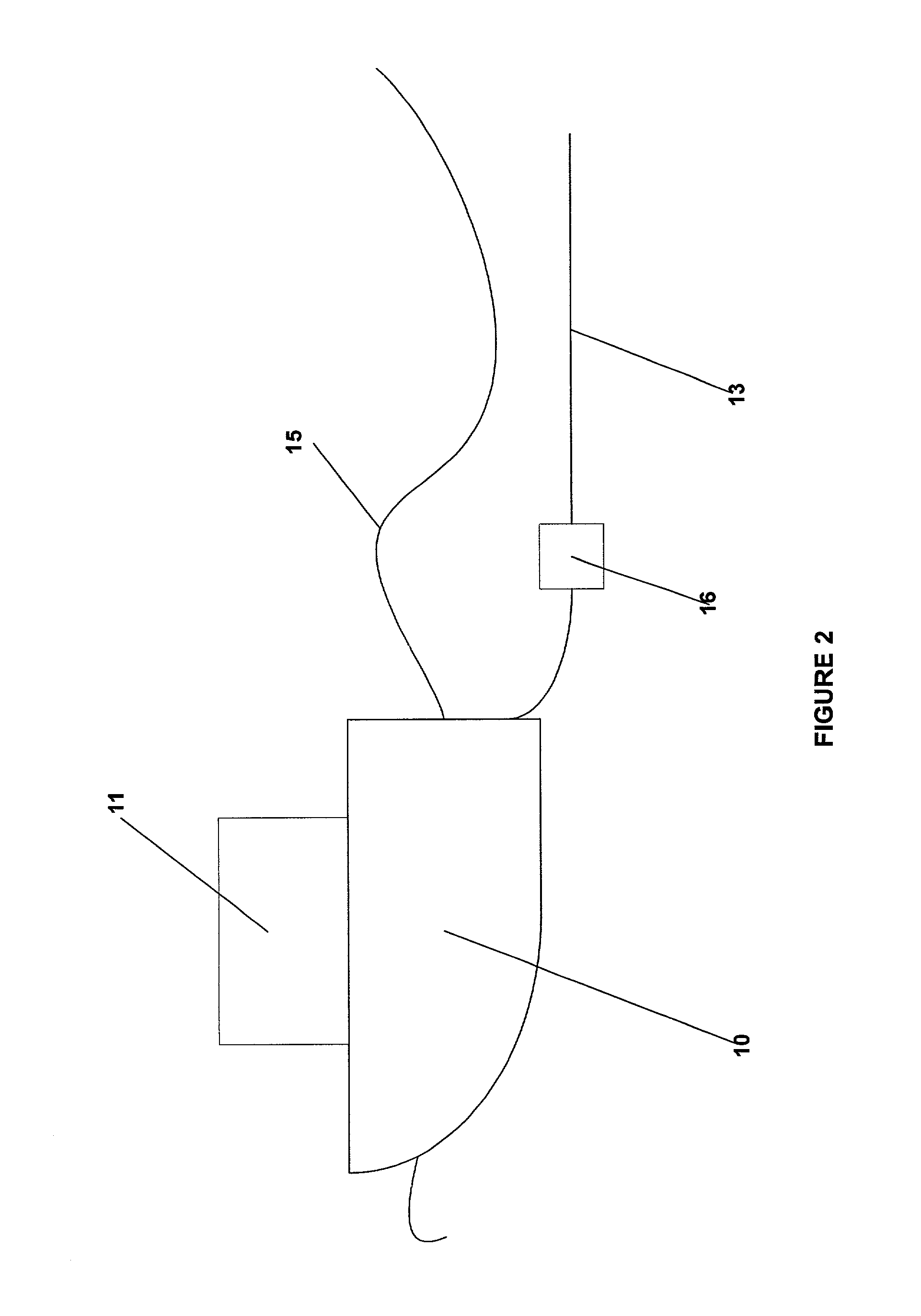Method and apparatus for dynamically controlled buoyancy of towed arrays
a technology of dynamic control and array, which is applied in the direction of underwater equipment, instruments, vessel construction, etc., can solve the problems of cumbersome operation, cumbersome, and unwieldy of known components, and achieve the effect of reducing the number of towed arrays
- Summary
- Abstract
- Description
- Claims
- Application Information
AI Technical Summary
Benefits of technology
Problems solved by technology
Method used
Image
Examples
Embodiment Construction
[0021] To one skilled in this art who has the benefit of this invention's realizations, teachings, disclosures, and suggestions, other purposes and advantages will be appreciated from the following description of preferred embodiments, given for the purpose of disclosure, when taken in conjunction with the accompanying drawings. The detail in these descriptions is not intended to thwart this patent's object to claim this invention no matter how others may later disguise it by variations in form or additions of further improvements.
[0022] Turning now to FIG. 1, a seismic survey vessel 10 is shown towing a marine seismic streamer 12 that may, for instance be 3000 meters in length. As shown in FIG. 1, at the front of and along the length of each streamer 12 is shown a plurality of attached mechanical deflectors 16 or birds to maintain the vertical position or depth of the seismic streamer beneath the surface 15 of the water. The tension created on the seismic streamer and the plurality...
PUM
 Login to View More
Login to View More Abstract
Description
Claims
Application Information
 Login to View More
Login to View More - R&D
- Intellectual Property
- Life Sciences
- Materials
- Tech Scout
- Unparalleled Data Quality
- Higher Quality Content
- 60% Fewer Hallucinations
Browse by: Latest US Patents, China's latest patents, Technical Efficacy Thesaurus, Application Domain, Technology Topic, Popular Technical Reports.
© 2025 PatSnap. All rights reserved.Legal|Privacy policy|Modern Slavery Act Transparency Statement|Sitemap|About US| Contact US: help@patsnap.com



